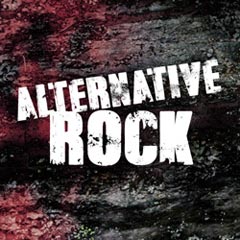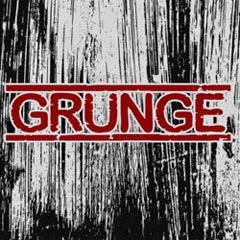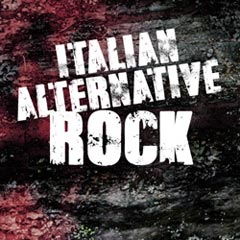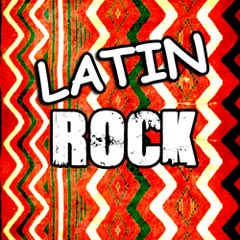Post grunge
ON AIR - PROGRAMMING
The Rise of Post-Grunge: A Blend of Alternative Rock, Hard Rock, and Pop
Back in the early 1990s, grunge music was a sensation, with bands like Nirvana and Soundgarden at the forefront of the movement. The angst-ridden lyrics and heavy sounds became the voice of a generation that felt disenfranchised and disillusioned. But as the years went by, grunge slowly faded away, leaving a void in the alternative rock scene. Enter post-grunge. Post-grunge is a subgenre of alternative rock and hard rock that emerged as a successor to grunge, blending elements of alternative, hard rock, and pop. In this blog post, we will explore the rise of post-grunge, the bands that defined the genre, and why it has continued to thrive.
Post-grunge came about as an imitation of the grunge sounds from original Seattle bands like Nirvana and Pearl Jam. The key difference between the two genres is that post-grunge is more accessible and less raw. It still has the heavy guitar riffs and angst-filled lyrics, but with a more polished and melodic feel. The genre exploded in the mid to late 1990s, with bands like Nickelback, Creed, and Three Days Grace leading the charge. These bands had a mainstream appeal and were able to generate massive radio play with their catchy hooks and polished sound.
One of the defining traits of post-grunge is its ability to mix heavy sounds and melodic vocals into a cohesive whole. This was achieved through the use of distortion and alternate tunings on the guitar, as well as clean singing and harmonies in the vocals. Bands like Bush and Foo Fighters were able to incorporate these elements to create a sound that was both heavy and polished. The result is a head-banging, sing-along anthem that has a broader appeal than pure grunge music.
Post-grunge bands also incorporated other genres into their sound, such as hard rock and pop. This allowed for more experimentation and diversity within the genre. Bands like Puddle of Mudd and 3 Doors Down were able to infuse pop elements into their music without compromising the heaviness of the sound. The result was a hybrid sound that appealed to a wider audience, making post-grunge one of the most commercially successful genres of the late 1990s and early 2000s.
So why has post-grunge continued to thrive? One reason is the emotional content of the music. Post-grunge lyrics often deal with themes of loss, regret, and heartache. These universal themes resonate with listeners, making the music relatable and emotional. Another reason is the strong sense of community that has developed around the genre. Post-grunge bands have a loyal fan base that supports them through thick and thin. The sense of belonging created by this community has helped to keep the genre relevant over the years.
Post-grunge may have emerged in the shadow of grunge, but it has since become a genre in its own right. Its blend of heavy guitar riffs, melodic vocals, and catchy hooks has made it one of the most commercially successful genres of the late 1990s and early 2000s. The emotional content of the music and the strong sense of community around the genre have helped it to continue to thrive. And while it may not be as raw and gritty as grunge, it has its own unique appeal that has cemented its place in the history of alternative rock.
Post grunge
Post-grunge is a genre that includes all the bands that started playing grunge music right after the great Seattle grunge bands hit the mainstream in the 1990s. During that period, the rapid success of grunge music was paralleled by its decline: with the publication of Nirvana’s album Nevermind in 1991, grunge music started to have some troubles. Kurt Cobain’s serious drug addiction and his discomfort with being famous represented a sort of warning signal of the decline of grunge, which sank with Cobain’s death in 1994. Moreover, Pearl Jam’s contractual problems and Alice in Chains Leayne Staley’s drug addiction led to the cancellation of many concerts in 1995. While the great grunge bands were facing a difficult spell some new bands started to tread the stage, emulating the former, being supported by the majors. The definition of post-grunge was born exactly to identify this new commercial and mainstream scene, whom fans and press have sometimes criticized.
The difference between grunge and post-grunge lies in that the former were firmly rooted in the underground alternative rock scene of the '80s, while the latter were influenced by what grunge had become, a popular form of hard rock, imitating its sound and style. The typical anger and introspection of grunge bands became a sort of essential requirements for post-grunge bands, which saw such features as the steps to take to attain artistic legitimacy. Such attitude, which came to be almost a moral code, became a kind of artistic manifesto for 1990s hard rock bands. Despite its alternative roots, post-grunge is a commercial and mainstream genre: it has been released on major labels, and the thick and distorted sound of grunge guitars was polished to be radio-ready. However, post-grunge bands received different influences: early-'80s jangle pop, punk-pop, ska revival, alternative metal, or classic rock.
The popularity of the genre came in 1995, when former Nirvana drummer Dave Grohl and his new band, Foo Fighters, defined the artistic parameters of post-grunge, achieving a considerable success in the US and in the world. Many bands who had started playing at the beginning of 1990s mad post-grunge one of the best mainstream subgenres in the new millennium. The scene spread outside its original Seattle birthplace; many bands contributed worldwide to the development of the genre: Live, Collective Soul, Candlebox, the Australian Silverchair with their 1996 debut album Frogstomp, the British band Bush and Alanis Morissette in Canada. The first wave of post-grunge bands was then followed by a new wave, with bands such as: Creed, with their 1999 record Human Clay, a must-have of the genre along with Silverchair Frogstomp; Matchbox Twenty, Three Days Grace, Puddle of Mudd, Breaking Benjamin; Staind with their 2000 record Break the Cycle; Chris Cornell’s and Tom Morello’s Audioslave; Alter Bridge, composed by former Creed members; Incubus, Hoobastank, Shinedown, Seether and Nickelback.
Exploring Post-Grunge Music
What are you thinking about?







